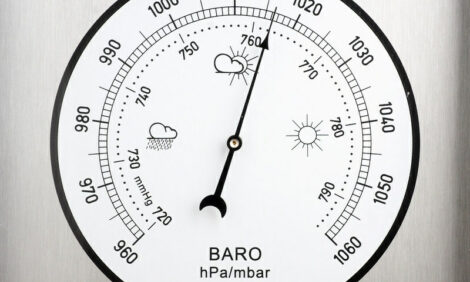



NAO report - an early review of the new farming programme
The government’s new farming policy will be a significant change for farmers in England.Defra has a lot to do to prepare for its implementation at a time when its resources are already under immense pressure from its preparations for brexit.
In the report, the National Audit Office (NAO) warns that government must approach its roll-out carefully to ensure farmers can prepare in the way they need to.
The UK farming industry provides over half of the food the UK eats, employs 474,000 people and comprises 217,000 farms. While a member of the EU, the UK takes part in the Common Agricultural Policy (CAP). Under CAP, farmers in England received €2.4 billion in subsidies in 2017. To prepare for exiting the EU, Defra is developing the Future Farming and Countryside Programme (the Programme) to implement a new agricultural policy and regulatory arrangements to replace CAP.
The key part of this new programme is the Environmental Land Management System (ELMS). Defra hopes to have 82,500 farmers enrolled on ELMS by 2028. Under CAP, most payments to farmers are based on the amount of land they farm. These direct payments will be gradually phased out over a seven-year period starting in 2021. Under ELMS, farmers will be encouraged to enter into a contract with the government to produce environmental land management plans, and be paid for the environmental outcomes they deliver, often working in collaboration with other farmers. The policy represents a major shift away from traditional farming towards a system that pays public money primarily for delivering environmental benefits.
Farmers will have little time to prepare for participation in a three year national pilot of ELMS, which will run from 2021 to 2024, because Defra is not planning to set out the environmental outcomes it will pay for or how much it will pay until April 2020. This is less than a year before the start of the pilot and when their payments will start to be reduced. Defra has consulted with farmers as it designs the Programme, but it has not provided the necessary guidance to enable farmers to plan how to adapt their businesses or how to work collaboratively with other farmers.
Defra has recently scaled back its ambitions for the level of take-up of ELMS during the first year of the three-year national pilot, from 5,000 farmers to 1,250, but is seeking to increase participation as the pilot progresses. It is not clear whether this lower number in the first year of the pilot will provide sufficiently robust evidence across the range of farm types and locations to inform further development of the Programme. This means that Defra only has two years to test how well ELMS will work at scale. Defra currently has no plans to test its assumptions about the level of take-up of the new system. If take-up is low, Defra will need to find alternative ways to achieve environmental benefits. Farmers that do not participate may leave farming or replace direct payment income by adopting more intensive farming methods that could damage the environment.
The success of the Programme depends on government assumptions about how the farming community will respond to the new policy. Direct payments from the EU currently account for an average of 61 percent of farms’ net profit. Without these, 42 percent of farms would have made a loss between March 2014 and February 2017. The Department expects the withdrawal of direct payments to be offset by improved business approaches, new entrants to the sector taking over farms that have ceased to be viable, and productivity gains across the sector. However, there is limited evidence that many farms are equipped to increase their productivity.
Defra is starting to specify its digital requirements for the Programme before key decisions have been made about how the new policy will work in practice, increasing the risk that it will need to make significant technology changes late in the Programme. For example, Defra has not yet decided which environmental outcomes will be rewarded or how much farmers will be paid.
The NAO recommends that Defra gets a plan in place with realistic timescales, that has sufficient flexibility to allow changes to be made as more is learned about how farmers react to the new farming policy. It should extend participation in its pilots to a wider range of farmers and land managers to test their willingness and ability to participate in ELMS, and determine the level of ELMS take-up it needs to justify investment in its design and development.
Gareth Davies, the head of the NAO, said:
“Defra is moving forward with a policy which is a radical departure from the CAP farm payment regime we have known for forty years. Because it is such a big change, from acreage-based direct payments to an environmental stewardship scheme, we have looked at Defra’s approach to implementing its policy at an early stage.
“We urge Defra to give itself time and space to fully test and evaluate the policy, and for comprehensive planning, to avoid any unintended consequences for the farming community, our environment or ability to feed ourselves.”
Key facts
- 82,500: number of farm holding that the government anticipates participating in the new Environmental Land Management System by 2028
- €2.4 billion: amount paid to farmers in England through Common Agricultural Policy (CAP) during the 2017 scheme year and that the government has committed to until the end of this Parliament
- £38.2 million: budget for the Future Farming and Countryside Programme in 2018-2019
- 217,000: farm holdings in the UK in 2017
- £8 billion: net annual contribution of agriculture to the UK economy in 2017
- 72 percent: proportion of UK land managed by farmers in 2017
- 474,000: people working in agriculture in the UK in 2017 (including casual workers)
- 85,000: recipients of CAP direct payments in England in 2017
- 16 percent: proportion of farmers who made a loss between 2014/15 and 2016/17, despite receiving direct payments
- 42 percent: proportion of farmers who would have made a loss between 2014/15 and 2016/17 if they had not received direct payments and everything else stayed the same









